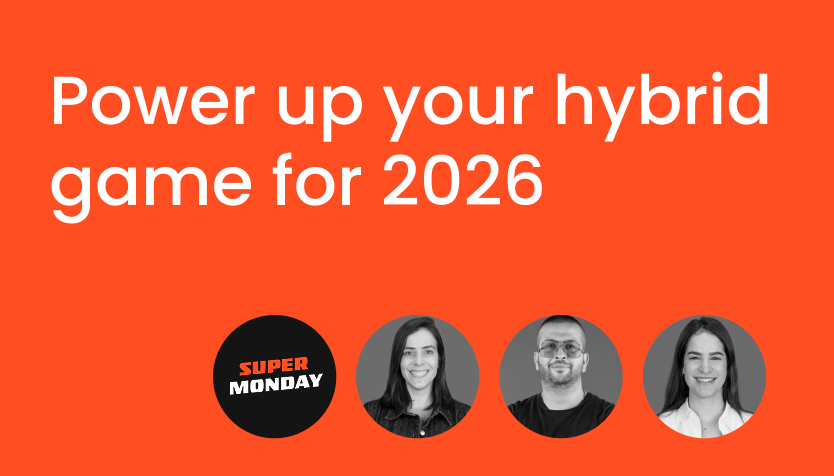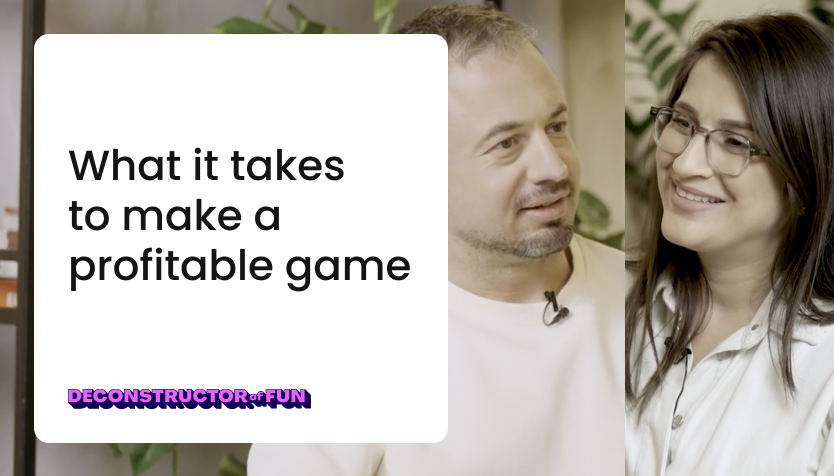Publishers field dozens of pitches each day, which makes it even more important that yours stands out. Usually, publishers have a checklist or general guidelines they follow so they know what they’re looking for in a pitch. To tap into the publisher's mindset and improve your acceptance ratio, Zvi Mehlman, Publishing Manager at Supersonic, discusses the very basics of pitching hyper-casual games so you can publish the next big hit.
Clarity of concept and outcomes is key
Hyper-casual games are the clearest and easiest games to play among all genres. In your pitch, your game’s concept and outcome (the objective the user is trying to achieve) need to be crystal-clear to prove it’s a good fit for the market. You should be able to describe your concept and the game’s goals in just 1-2 sentences so publishers can understand your game’s foundation then apply their knowledge of the industry and trends to determine if there’s a market for it. Publishers are looking for a simple concept because they’re thinking of what games they can easily show off in video creatives when you get to the UA stage of the publishing process.
Get people from other teams in your studio and those outside of it play your game to see if the concept is clear by checking the following:
- How easily and quickly do people understand the concept?
- How do they play? Do they understand what they’re trying to achieve?
If the answers to these questions aren’t clear based on how people are playing your game, then you’re not ready to pitch yet. Take a look at where people are getting stuck and get their feedback for what’s not clear so you can edit your game and position it more clearly. For example, if players say they don’t understand the goal of the level, you could introduce a tutorial screen that tells them what they need to do to complete it.
A game like Join Clash shows what a clear concept and outcome can achieve - players immediately understand the outcome of the game was taking over the castle, and doing so gives them a feeling of satisfaction and achievement. We saw potential in the game’s clear concept and objective, and then through game tweaks and optimizations, Join Clash went on to reach #2 on iOS and Android and boost LTV 2x.
Define your core mechanics and design
Making sure your game’s main mechanics and design relate to the concept will help publishers get a feel for the game, see its potential, and determine if it fits with current market trends. Analyzing the core parts of your game can help you understand what other competitors or similar games are out there - if you come across some, you could make a few changes to mechanics or design to better stand out.
When you pitch your game, publishers will likely have questions about:
- What are the game's core mechanics and controls? These should complement the gameplay - such as in a runner game where the character is on auto-run so the player can just swipe the screen to move instead of holding their finger pressed on the screen the entire time
- What’s the camera angle/player point of view? Users want to see what’s going to happen next and your camera angle and perspective can affect this. In Stacky Dash, we made the camera angle static and switched to platforms that stayed on the same level so players could see what to expect next and get a sense of their progress
- What’s the art style - does it work well with the concept? If it’s a decision-making game with a first-person point of view, a more realistic art style may work better because the user feels more immersed. If it’s a runner game - which in hyper-casual games usually features a simple stickman character - then a less detailed design could be a better fit
These questions allow the publisher to understand almost everything they need to know about your concept. Clearly defined mechanics and a design that relates to your concept can improve your pitch and ensure publishers understand your game and its potential from the start.
Have a hook
The hook helps publishers understand how engaging, sticky, and marketable your game’s concept is - it is the make or break aspect for any pitch. This is often the part of your game that publishers will highlight in creatives for UA campaigns, so they’re looking for a hook that both attracts and retains users.
Sometimes, publishers will ask you what your hook is during your pitch. When trying to determine yours, think of the fun and unique elements that make your game stand out from the rest. It could be your gameplay - a relaxing mechanic like sorting beads or an unusual slingshot gesture - or your design. Visuals like 3D graphics and themes or sound effects and music can also be your hook - just consider what would seem the most unique to publishers and your users.
There are times when the publisher will recognize your hook without needing to ask you directly because they’ll see it’s about showcasing an existing idea in a way that’s satisfying, compelling, or exciting. Take the ASMR sub-category of games as an example - it’s now a full-blown genre. Developers that successfully translated the ASMR feeling to users through games have reached the top of the charts just by optimizing an existing, engaging concept and adapting it as a game.
Emoji Puzzle combined these two ideas for a hook, highlighting familiar icons from popular culture - emojis - that users recognized and enjoyed while introducing a new concept of matching by topic (instead of similarity). This combination of new and recognizable features helped them reach #2 on the Google Play Store, achieve 47% D1 retention, and earn more than $0.60 LTV.
The art of the pitch
A winning pitch starts with believing in your concept and then making it as clear as possible, honing your mechanics and design, and highlighting your game’s most engaging features. Starting with something as simple as a Slack message to a publisher, you can pitch your game in a way that addresses their most common questions and concerns while still allowing your creativity to shine through.
Let's put these tips to good use
Publish your game with Supersonic



